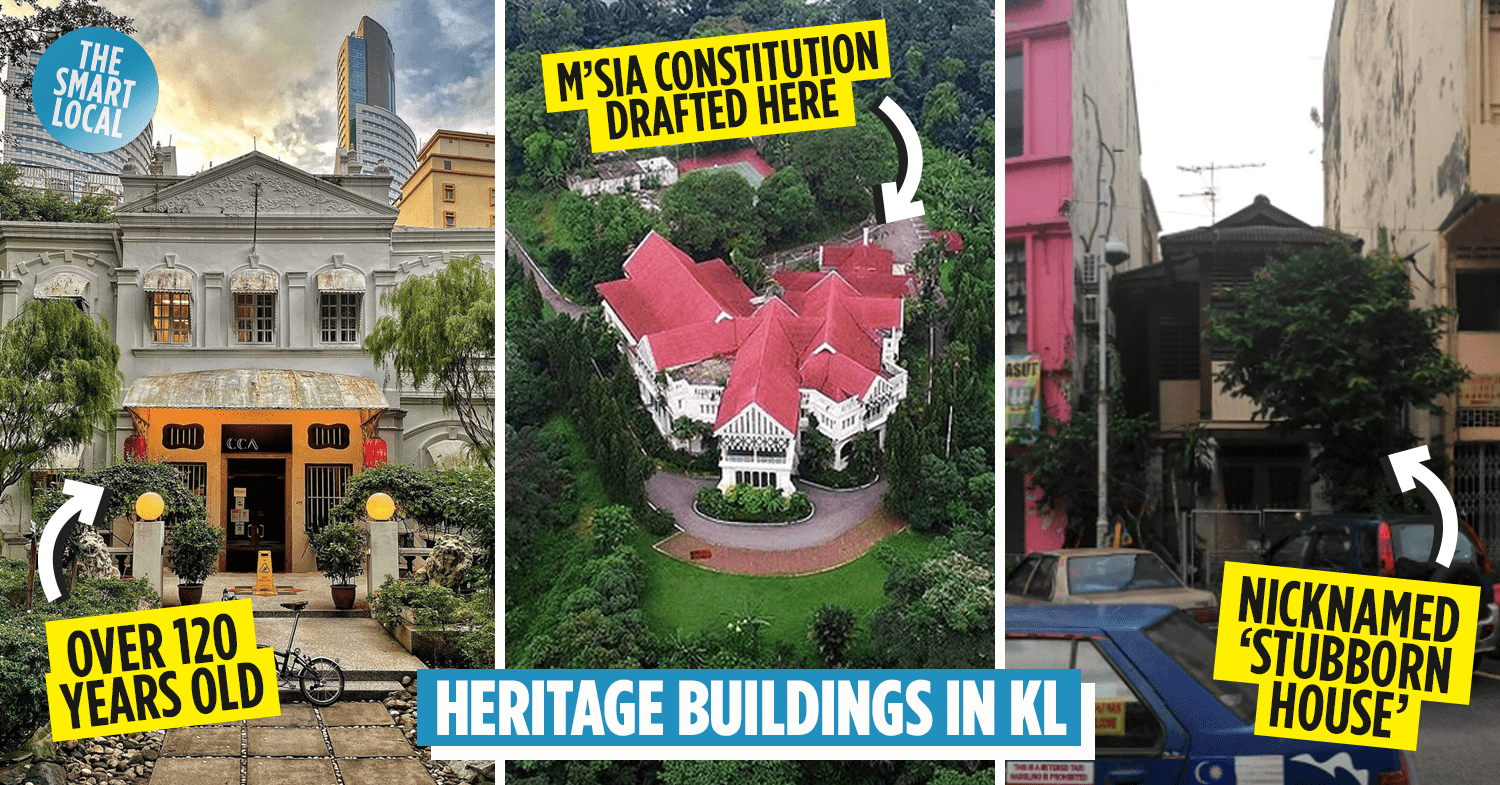Heritage buildings in KL
The streets of KL comprise a patchwork of buildings ranging from heritage ones to glossy skyscrapers that shows just how much Malaysia’s capital city has changed and developed over the years. With more new buildings cropping up in recent times, older ones in the city recognisable in age for their bygone architecture may have their histories overlooked.
Besides the well-known colonial architectural marvels of KL, here are 11 heritage buildings in KL with secret histories that you might have missed out on.
1. Loke Mansion – white mansion in downtown KL
Several old buildings from KL’s past happen to be mansions. This includes Loke Mansion, an opulent whitewashed mansion in the heart of KL that was the last and final residence of Loke Yew, a tin tycoon who was once the richest man in Malaysia.
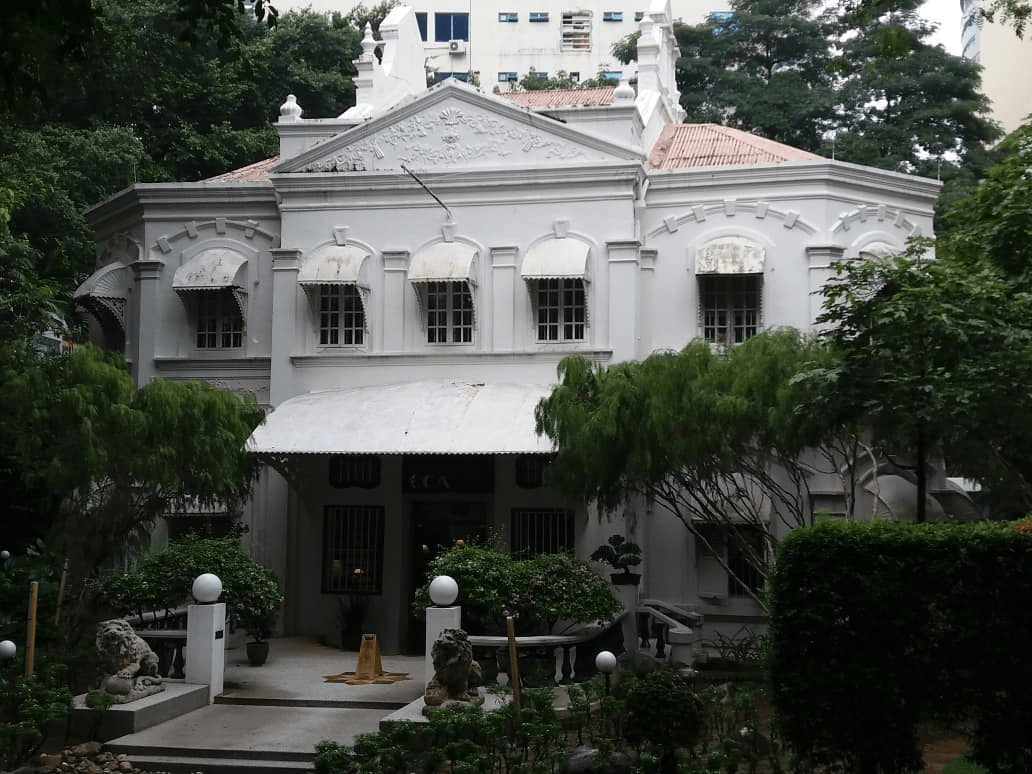
Image credit: @wyewong
The mansion has been around for a whopping 129 years. It was built in 1892 by Cheow Ah Yeok, a Chinese merchant acquainted with Loke Yew and China Kapitan Yap Ah Loy. Although there are only two floors in the mansion, it took over 12 years to complete, and is said to be one of the first residences in the Federated States of Malaya to have running electricity.
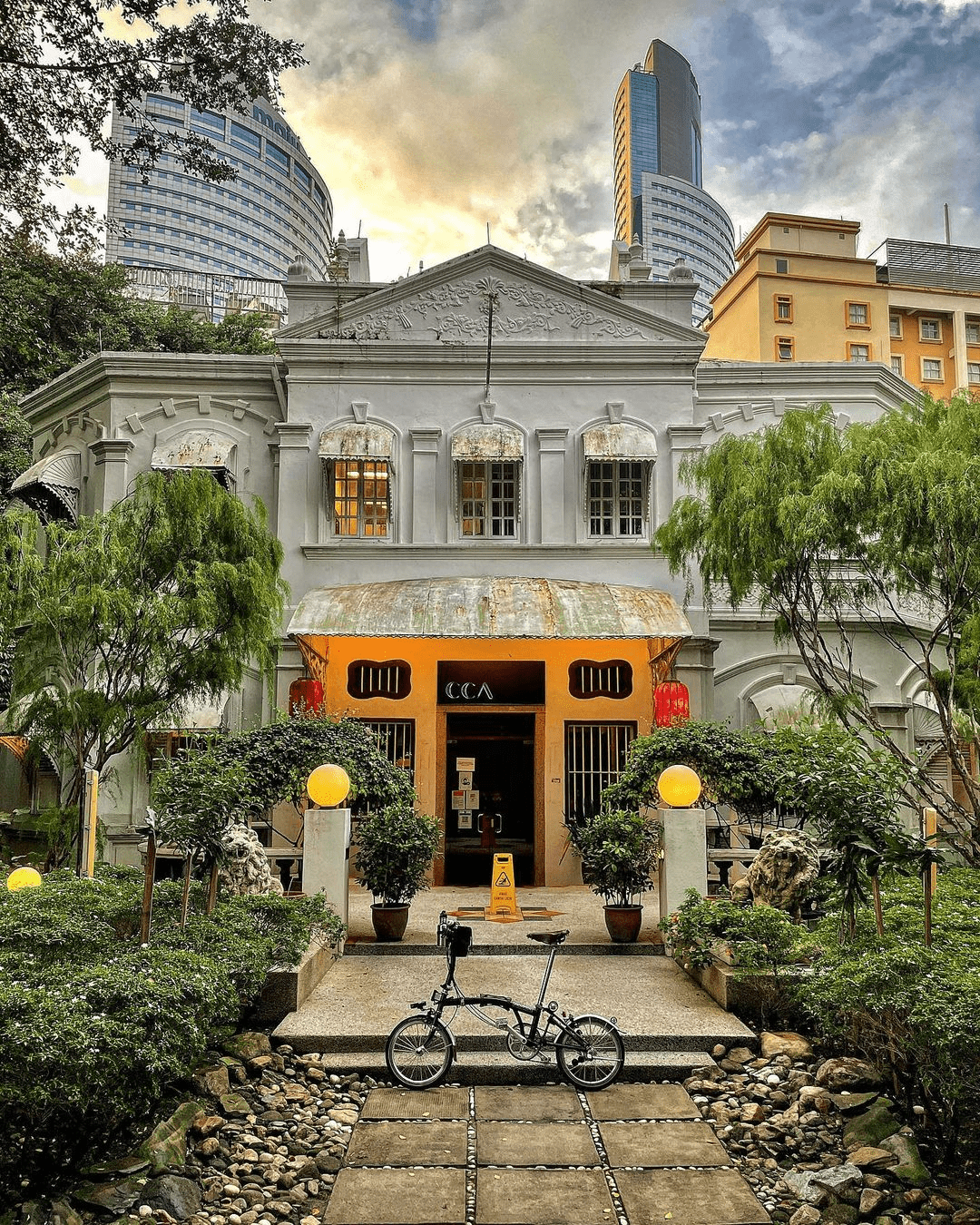
Image credit: @christopherhwwong
Over the course of its century-long history, the mansion was occupied by several entities following Loke Yew, who remained there until his death in 1917. This includes occupation by Japanese soldiers during World War II. It was also later used by Sam Min Chu Yi Youth Corps as a school, and converted into a police training centre during the 1948 Communist Emergency.
From 1958 to 1970, it was left abandoned, but brought back to life as an art gallery, Samad Art Gallery and Artiquarium, and Lim Kok Wing art school up till 2000 when it was unoccupied once again. Since 2014, the mansion has been leased by Cheang & Ariff law firm and undergone several refurbishments.
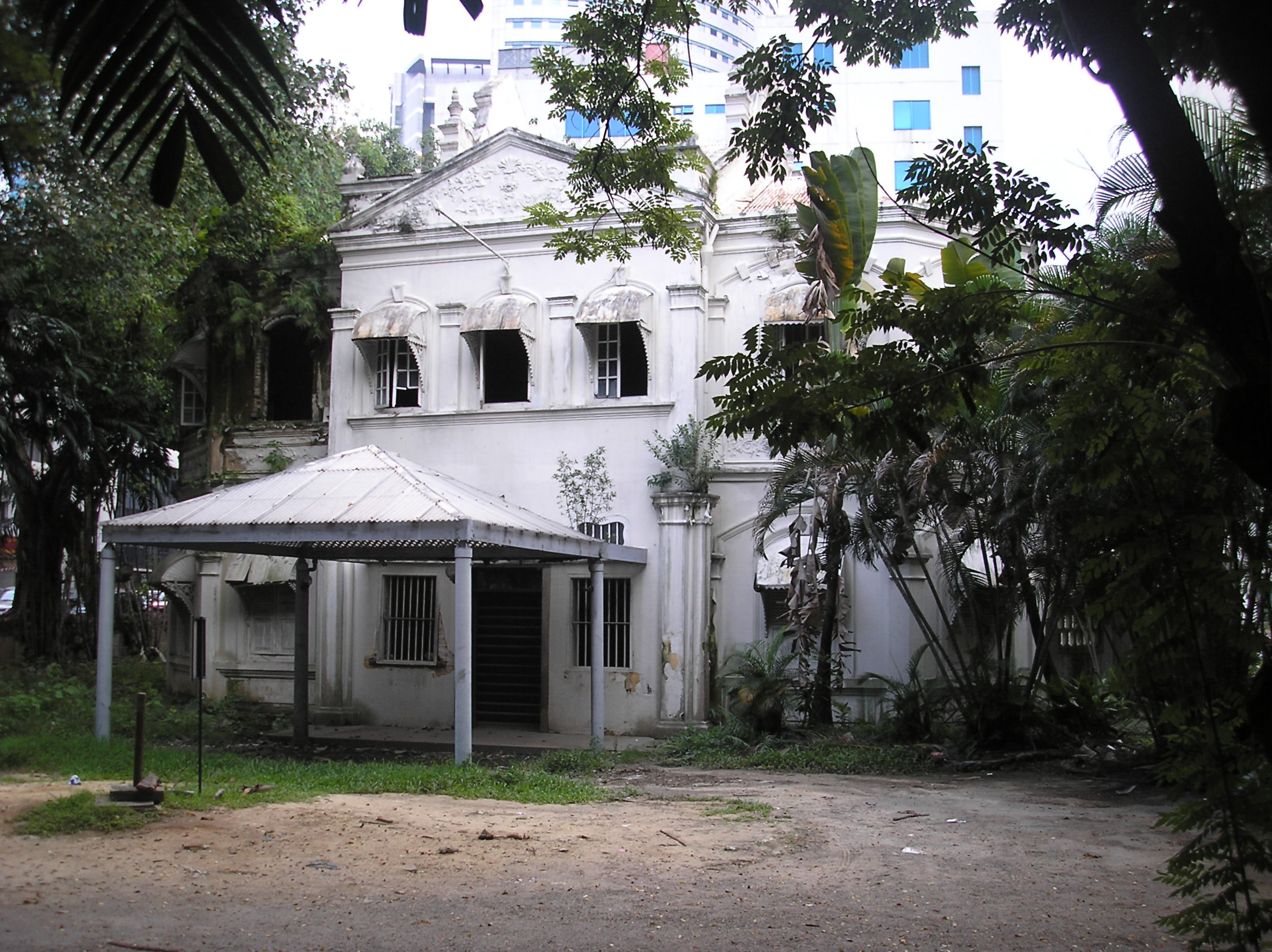 Loke Mansion when it was abandoned in 2007
Loke Mansion when it was abandoned in 2007
Image credit: Wikimedia Commons
The mansion remains standing today, unique to surrounding buildings due to its white facade and hybrid of several different architectural styles – including influences from the Chinese, Dutch, and Moorish seen in various doorways and buttresses around the mansion.
Address: No. 273A, Jalan Medan Tuanku, 50300 Kuala Lumpur, WP Kuala Lumpur
2. Rumah Pusaka Chow Kit – 100-year-old ‘Rumah Degil’ in Chow Kit

Image adapted from: Rumah Degil Sutan Puasa
Those who frequented Chow Kit before 2015 might recall seeing a traditional Malay wooden house sandwiched between brick buildings there. Called Rumah Pusaka Chow Kit, the house has since been relocated to the National Art Gallery, but was once a prominent part of Chow Kit with a backstory that many locals compare to the Disney animation film, Up.
The references began as the owner of the house, an elderly lady called Norma, had refused millions of ringgit to move out so the house could be demolished to make way for new building projects. As such, the house, built in 1926, was nicknamed ‘Rumah Degil’ as it was once the last wooden structure on Chow Kit where commercial buildings were quickly cropping up around it.
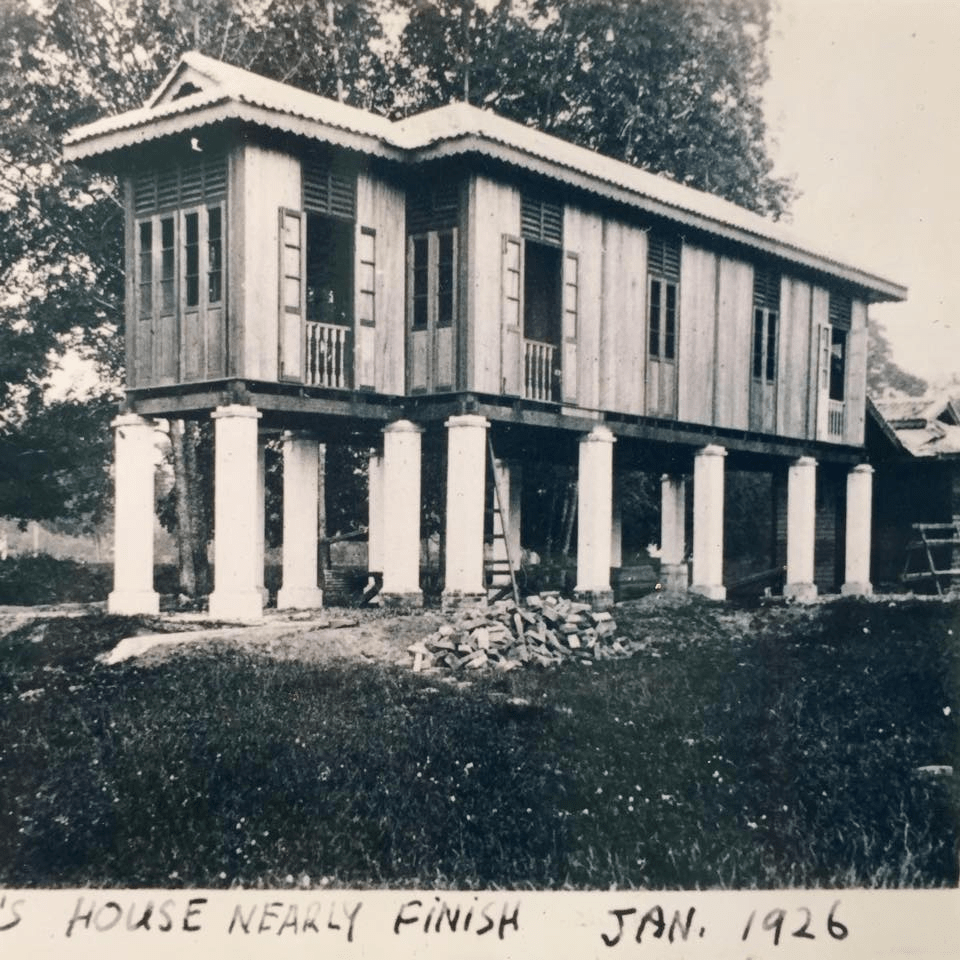
Image credit: Rumah Degil Sutan Puasa
In the end, it wasn’t balloons that led to the house’s disappearance on Chow Kit in 2015.
The house saw its last occupant, Norma, having to sell it in 2013 as she was unable to afford its upkeep. It marked the end of an era, as the house was originally owned by her grandfather, Haji Jaafar Sutan Mengatas, believed to be a descendent of Sutan Puasa who settled in KL back in the 1830s.
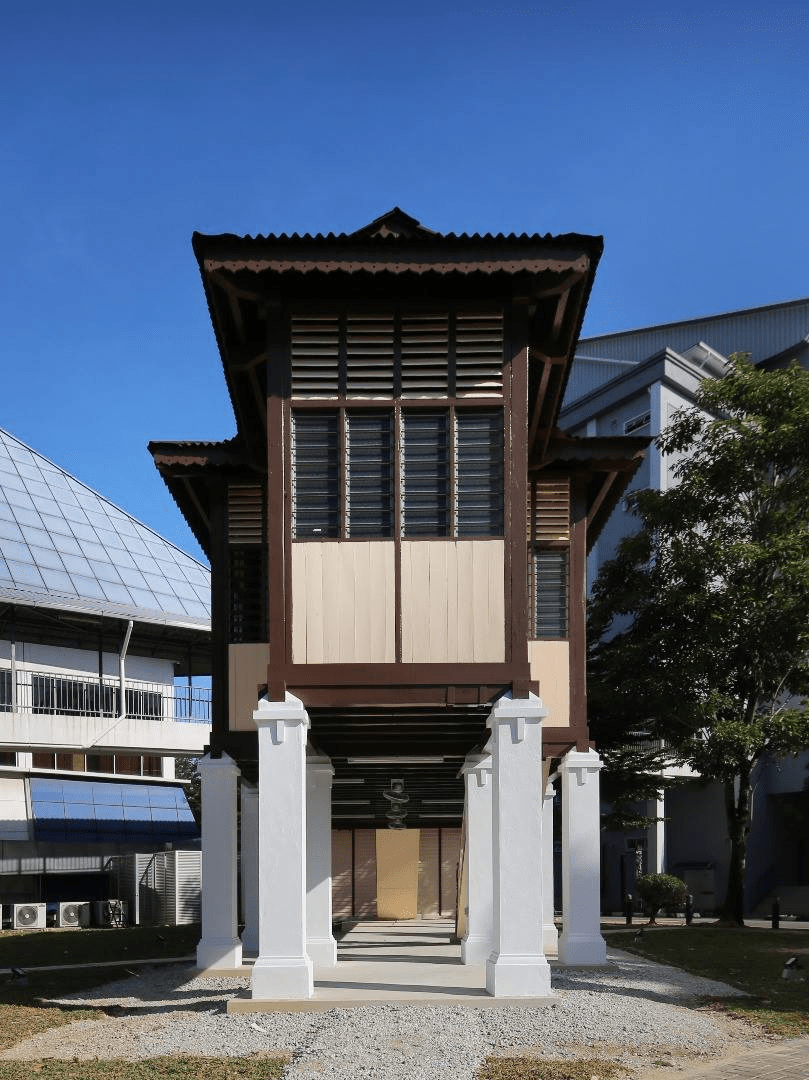
Image credit: Rumah Degil Sutan Puasa
Thankfully, a volunteer team, with involvement from the architect brought on to redevelop the land, helped to dismantle the house and conserve it. The house has now been completely relocated and reconstructed at the National Art Gallery, with 90% of materials retained from its original structure.
Address: No. 2, Jalan Temerloh, Titiwangsa, 53200 Kuala Lumpur, WP Kuala Lumpur
3. Rubber Research Institute – lesser-known art deco building
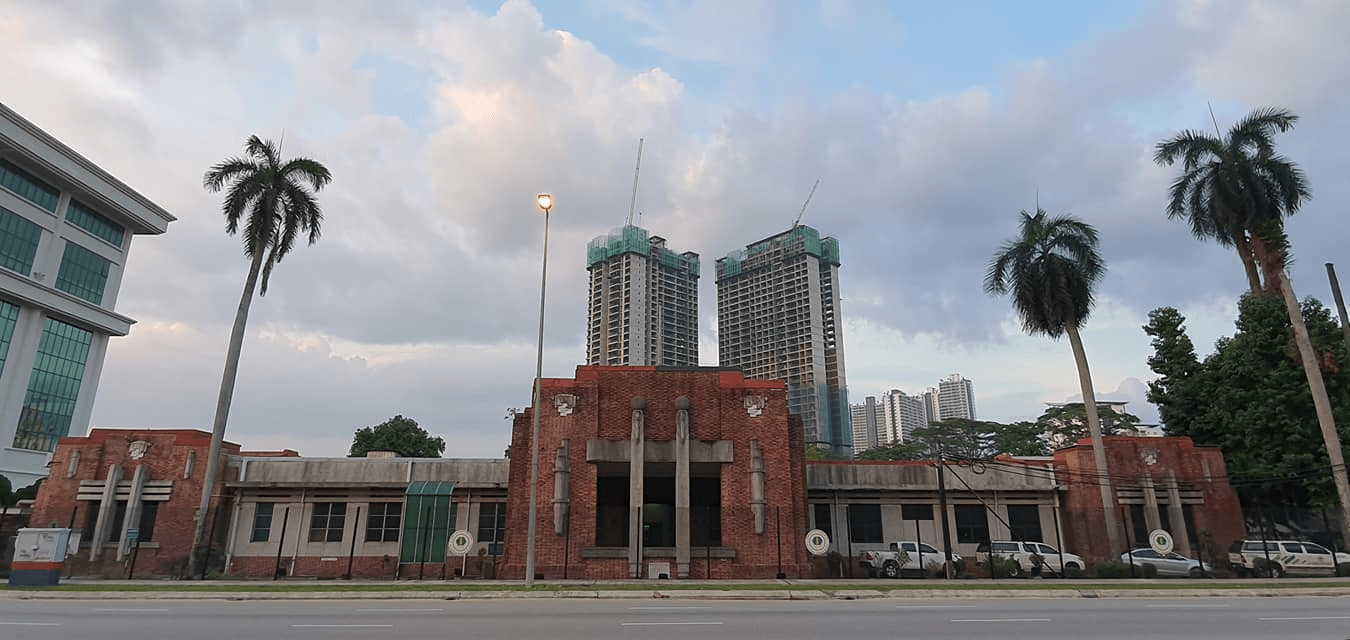
Image adapted from: Zdr Zon
Among several embassies and high-rise apartment complexes on Jalan Ampang sits an unassuming exposed-brick building home to the Rubber Research Institute of Malaysia. Unlike most art-deco style buildings towering over pedestrians in KL, this is made up of three single-storey, symmetrical buildings connected by corridors.
It remains a lesser-known part of KL’s architectural landscape due to its location. But it was declared a National Heritage site in November 2009, and built years before in 1937. The red-brick building was designed by British architect Arthur Oakley Coltman, the brainchild behind other recognisable buildings in KL such as Odeon Cinema and OCBC Building.
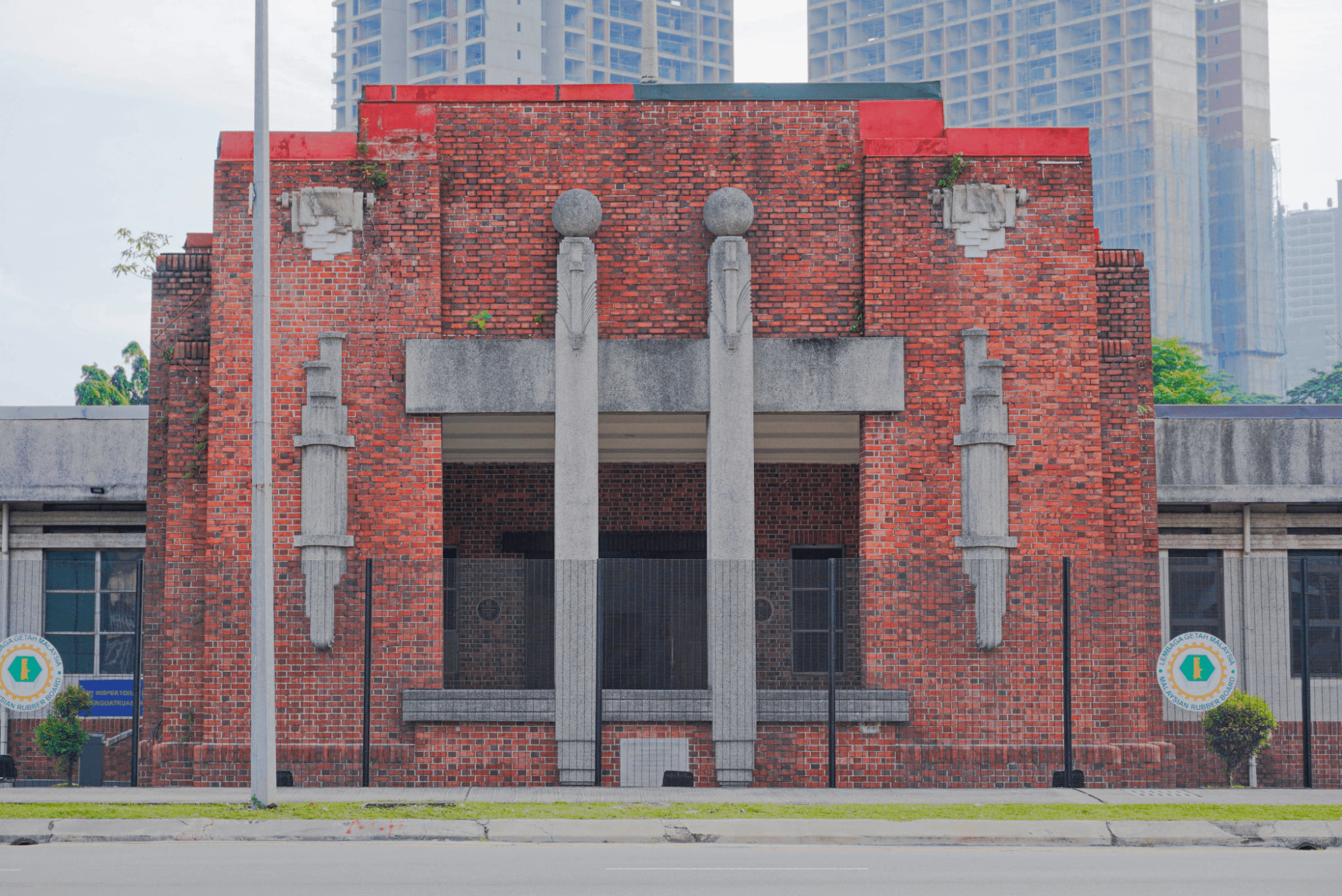
Image credit: Tun Razak Exchange
Inside the building, valuable research and development of rubber, which played an important part in our country’s early economic history, takes place. A wall of five bas-relief panels carved by Italian sculptor Rudolfo Nolli can be found in the building, telling the story of Malaysia’s major export – from planting rubber trees to rubber usage in our daily lives.
Address: 260, Jalan Ampang, Kampung Datok Keramat, 55000 Kuala Lumpur, WP Kuala Lumpur
4. Chow Kit Mansion – one of two luxe hotels in KL during the 1900s
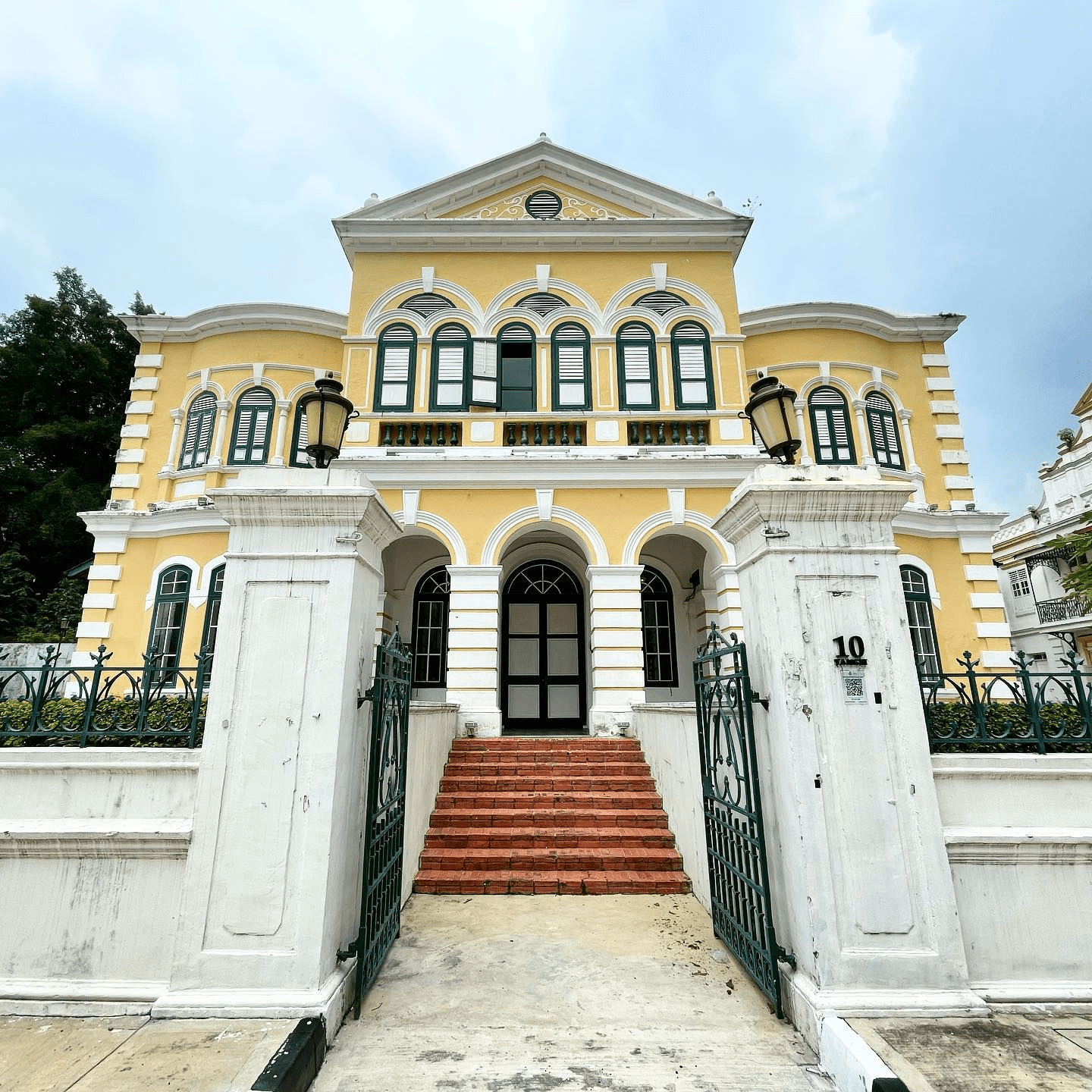 Image credit: Rumah Tangsi
Image credit: Rumah Tangsi
Another opulent mansion in KL is Chow Kit Mansion, which was the residence of Loke Chow Kit, a prominent figure in KL who opened the first department store in the city. It’s a hard-to-miss building due to its bright yellow facade, and European Neo-classical and Renaissance architecture that adds to its charm.
The mansion dates all the way back to 1903, when Chow Kit resided here with his family. When they left the residence in 1909, it was converted into a hotel Empire Hotel, becoming one of two luxe hotels in KL popular during the 1900s. The hotel was later rebranded as Peninsular Hotel, but fell out of popularity due to the rise of other major hotels in the city.
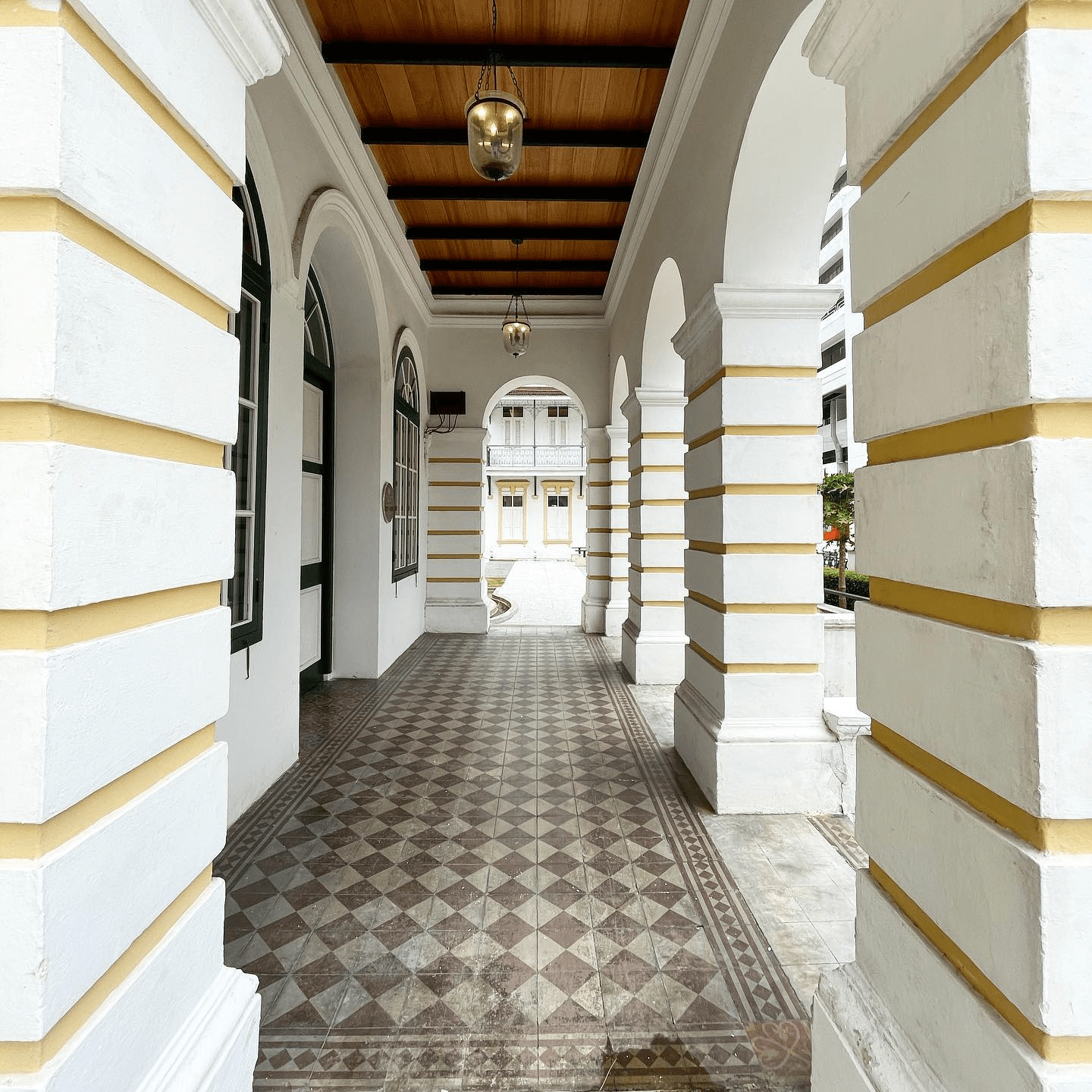
Image credit: Rumah Tangsi
After World War II, the building was used as the headquarters of the 2nd Guards Brigade. It was scheduled to be demolished and replaced with a luxury apartment building. Before the city could lose an architectural marvel, Chow Kit Mansion was transferred to the custody of DBKL, with restoration works carried out by an architect group to restore the house to its former glory.
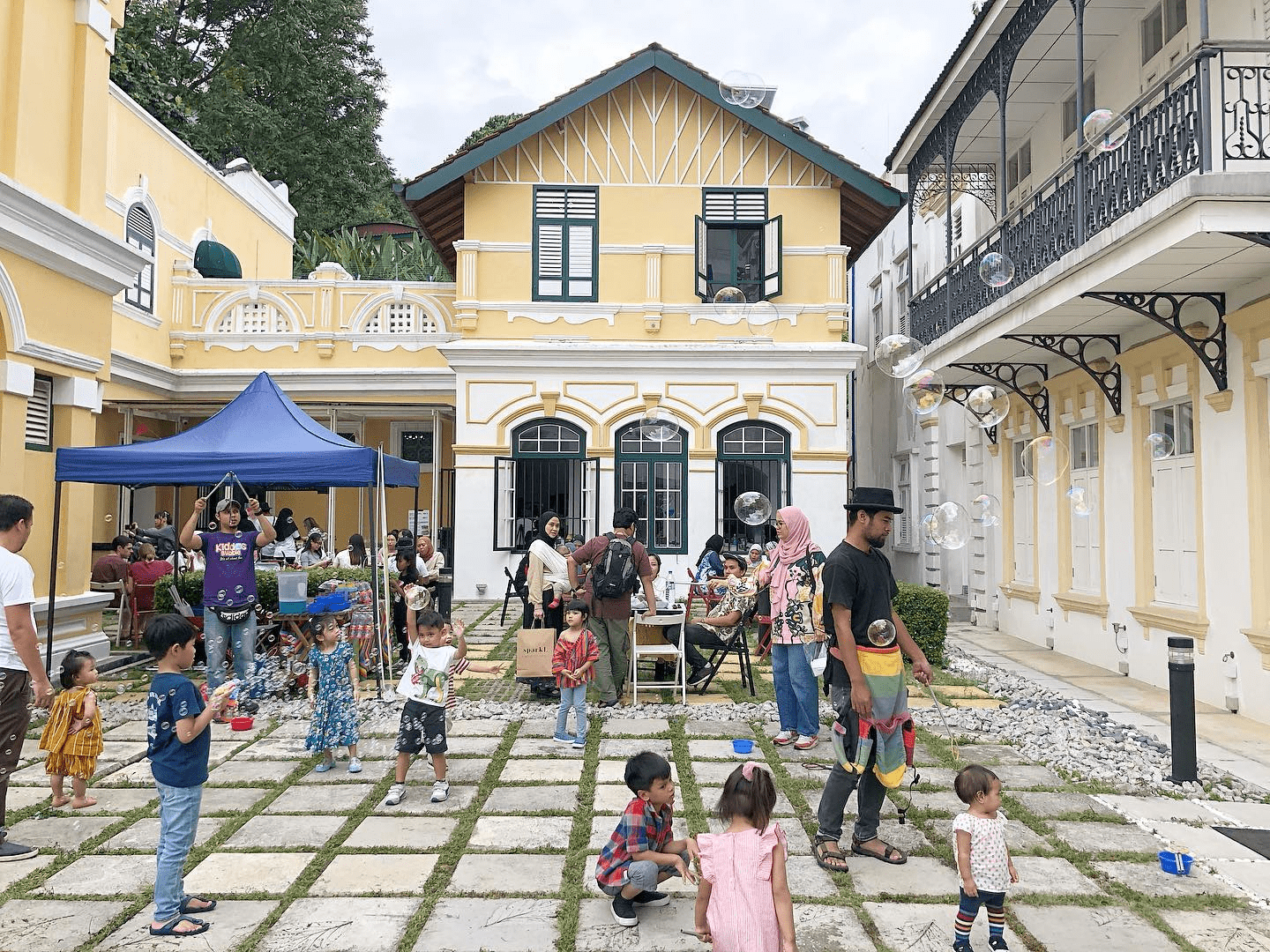
Image credit: Rumah Tangsi
The mansion is now known as Rumah Tangsi, a buzzing event space that hosts art exhibitions, wedding photoshoots, local bazaars and more.
Address: 10, Jalan Tangsi, Tasik Perdana, 50480 Kuala Lumpur, WP Kuala Lumpur
5. Oriental Building – once the tallest building in KL
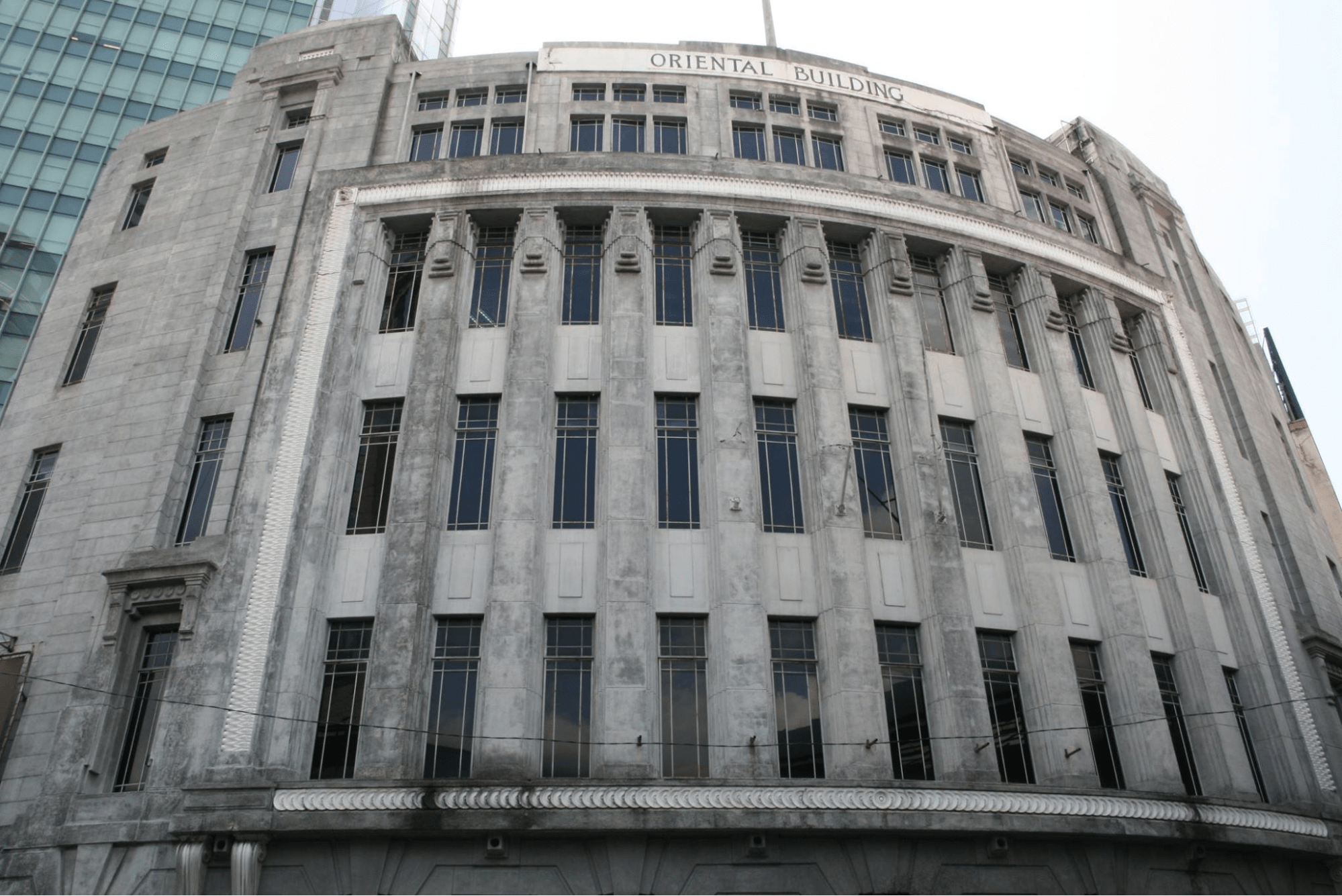
Image credit: Kuala Lumpur Landmarks
Oriental Building is an eye-catching landmark on Jalan Tun Perak due to its grey, art deco exterior unlike other gleaming modern skyscrapers in the city. But when the building was first unveiled to the public in 1931, it was deemed a lively and modern addition to KL’s commercial centre during the Great Depression, with its ground floor even designed to house retail shops.
The curved building was also once the tallest building in KL during the 1930s, standing at 82ft tall, or five storeys high. But it’s now dwarfed by neighbouring buildings. Nonetheless, it remains one of the largest art deco buildings in KL, next to Central Market.
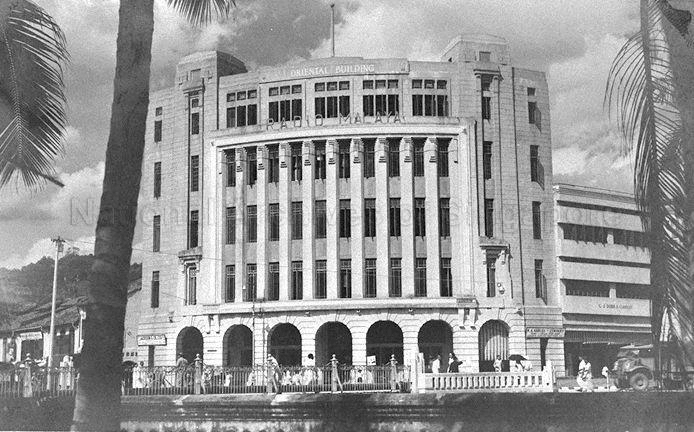
Image credit: National Archives of Singapore
Just five years after it opened, the building was affected by earthquake tremors felt in our country on 19th September 1936. Fortunately, there were only minor damages to its upper floors. The Oriental Government Security Life Assurance Co. was inhabiting the space then. The building was later home to Radio Malaya, with a signage of its name added below ‘Oriental Building’ to reflect this, and subsequently, the location of the High Commissioner of India and Life Insurance Corporation of India.
Address: Jalan Tun Perak, City Centre, 50050 Kuala Lumpur, WP Kuala Lumpur
6. Rumah Penghulu Abu Seman – traditional Malay house from Kedah
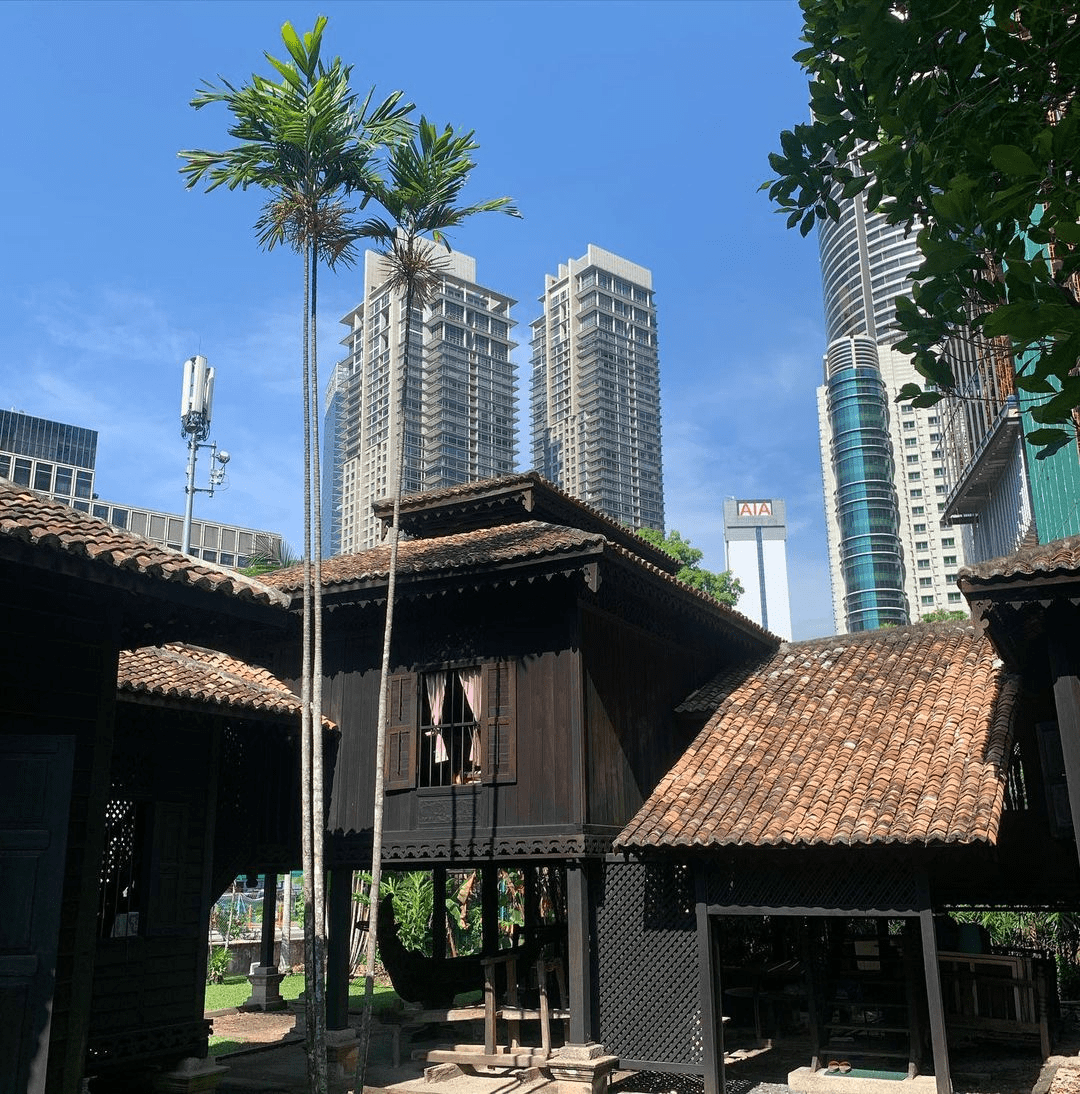
Image credit: @mathildouille
Bukit Bintang is known as a shopping district home to popular malls such as Lot 10 and Pavilion KL. Just a short 8-minute walk from here is Rumah Penghulu Abu Seman, one of the oldest surviving traditional Malay houses in Malaysia that’s built on stilts and constructed from wood.
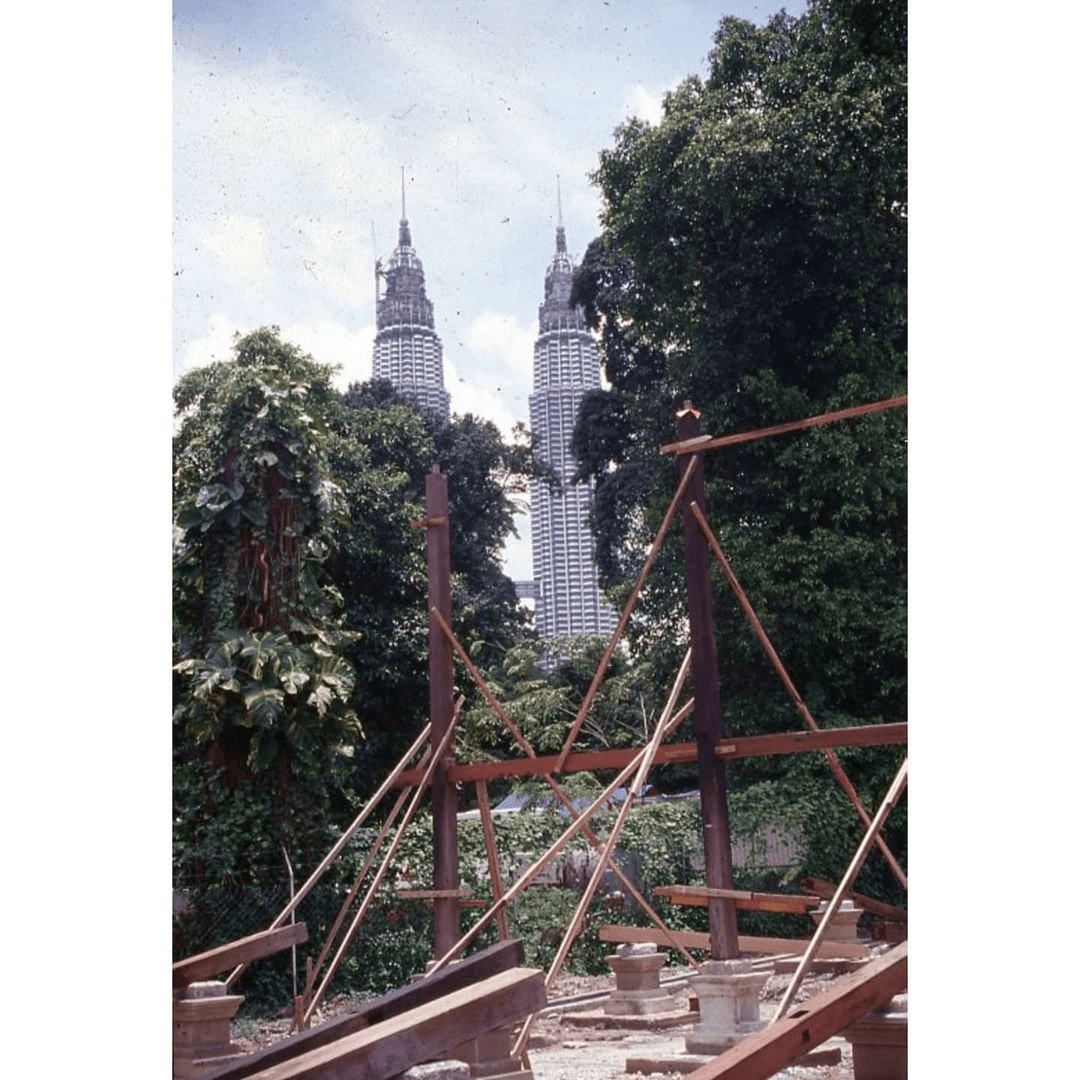
Rumah Penghulu Abu Seman being reconstructed in KL
Image credit: @heritagemalaysia
The house was originally located in Bandar Baharu, Kedah, where it was owned by a wealthy village head in 1916. In 1996, efforts to rescue, relocate and restore the house in downtown KL – over a 4-hour drive away – was carried out by Badan Warisan Malaysia, a non-government organisation that seeks to preserve Malaysia’s heritage.
Today, city dwellers can see how Malays once lived outside of the cities way back by visiting the house for free at Badan Warisan Malaysia on Jalan Stonor.
Address: 2, Jalan Stonor, 50450 Kuala Lumpur, WP Kuala Lumpur
7. Carcosa Seri Negara – mansion where Malaysia’s Constitution was drafted
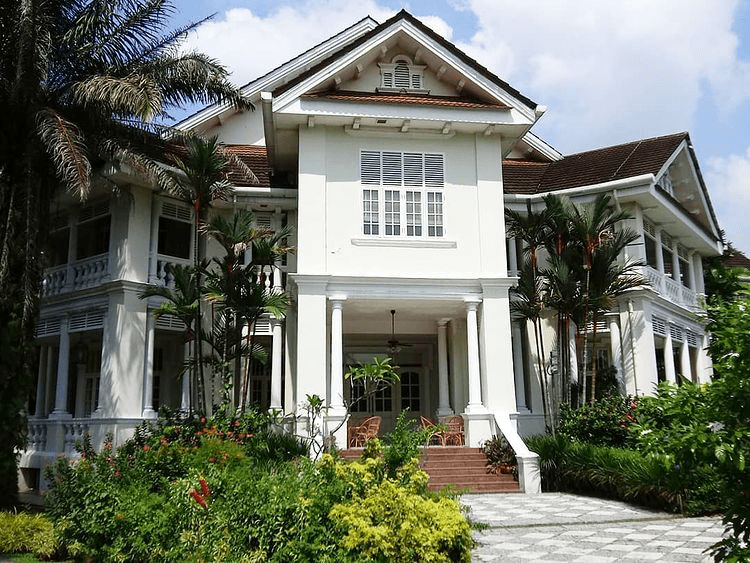
Image credit: @other_henry
Movie buffs might be familiar with Carcosa Seri Negara, as it was featured in the 2018 US film Crazy Rich Asians as the residence of one of its lead characters. But before it made it to the big screen, the historic site played an important part in our country’s independence movement, as it was where the Constitution of Malaysia was drafted between 1955-57.
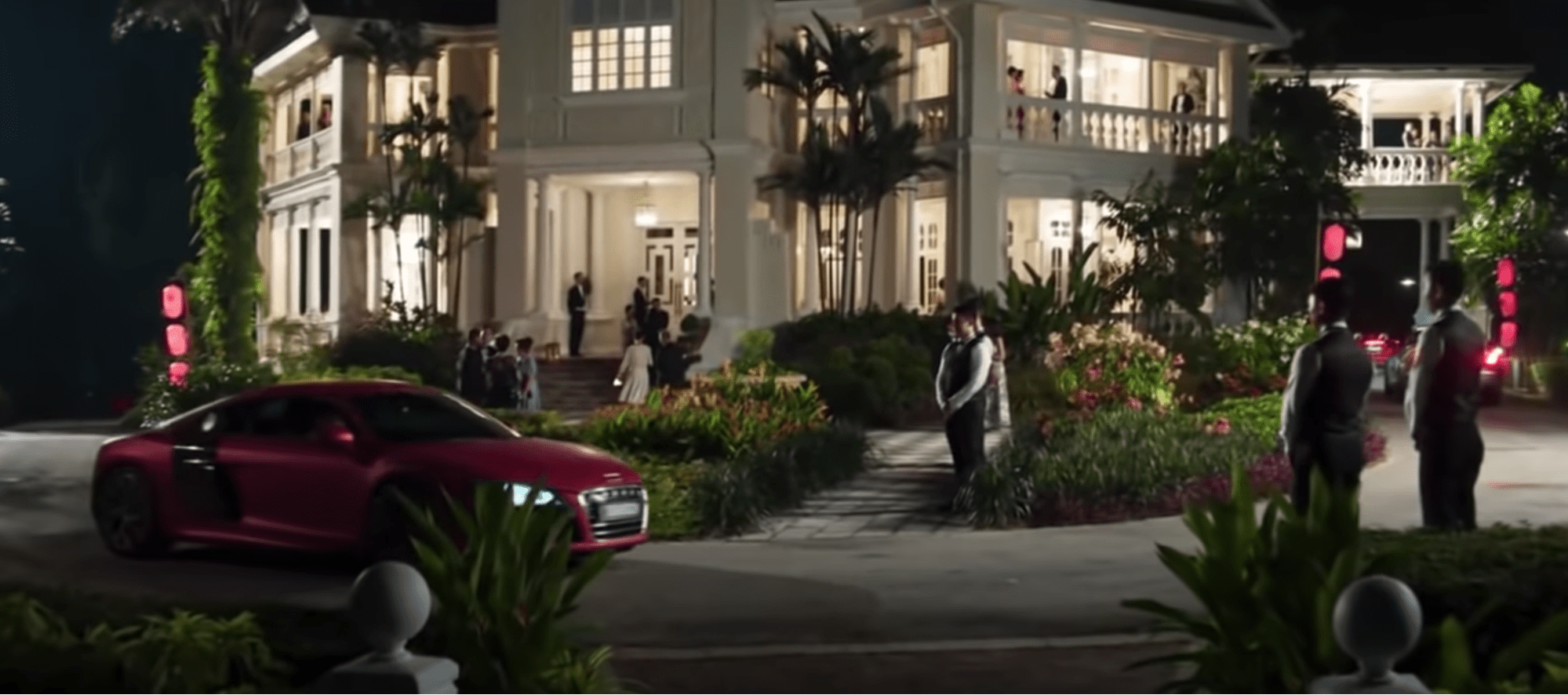
Carcosa Seri Negara featured in Crazy Rich Asians
Image credit: YouTube
Carcosa Seri Negara comprises two mansions – Carcosa and Seri Negara. The first mansion, Carcosa, was built in 1896 as the residence of the first British High Commissioner, Sir Frank Swettenham. Seri Negara, a smaller house also known as the King’s House, was added to the grounds in 1913 as a guest house.
During Malaysia’s independence movement, the mansion was used as a meeting place and where Malaysia’s Constitution was drafted. The Federation of Malaya agreement was signed here too in 1957.
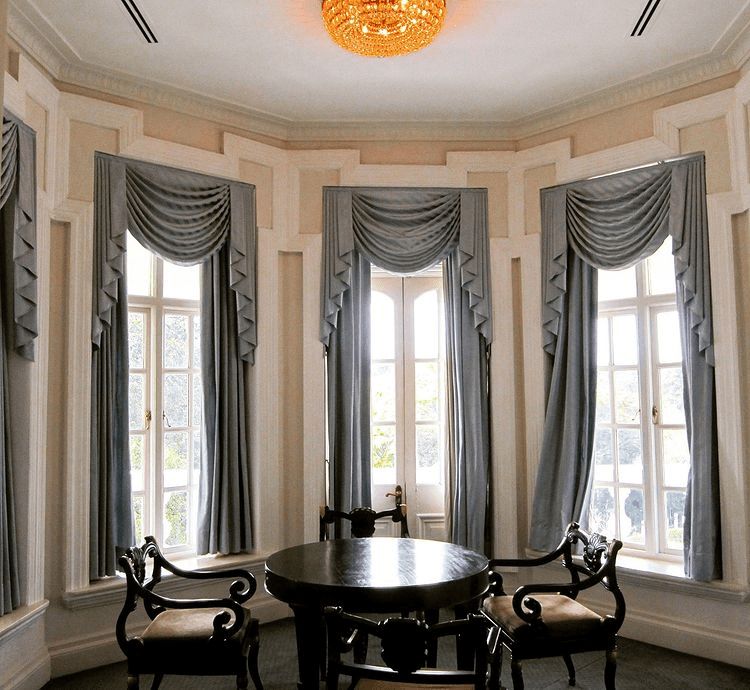
Image adapted from: @es20160930
Prior to these events, the mansion was used as the headquarters of the Imperial Japanese Army during World War II. After the war, it was briefly the residence of visiting dignitaries, hosting prominent individuals such as Queen Elizabeth and the late Prince Phillip of England, who stayed here during their visit to Malaysia for the 1989 Commonwealth Heads of Government Meeting.
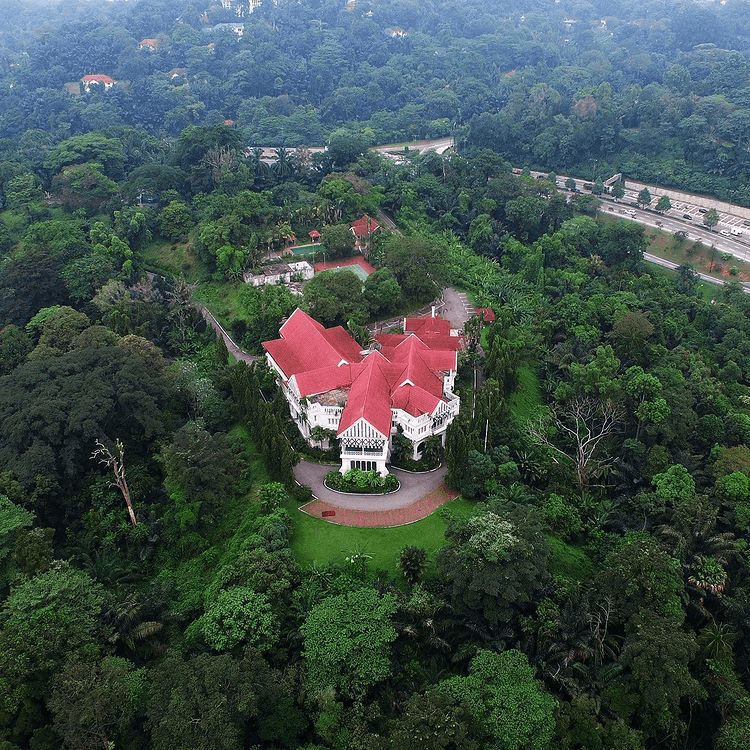
Image credit: @schutters.anita
The mansion was transferred to the care of the Asian Heritage Museum (AMH) on a 3-year lease in 2017, with visitors able to tour the historic mansion’s grounds and learn more of our country’s history through exhibits held inside the mansion. However, the museum’s lease was terminated in 2019, and the mansion is currently under the possession of the Government of Malaysia and not open to the public.
Address: Jalan Kebun Bunga, Tasik Perdana, 55100 Kuala Lumpur, WP Kuala Lumpur
8. Sin Sze Si Ya Temple – oldest Taoist temple in KL
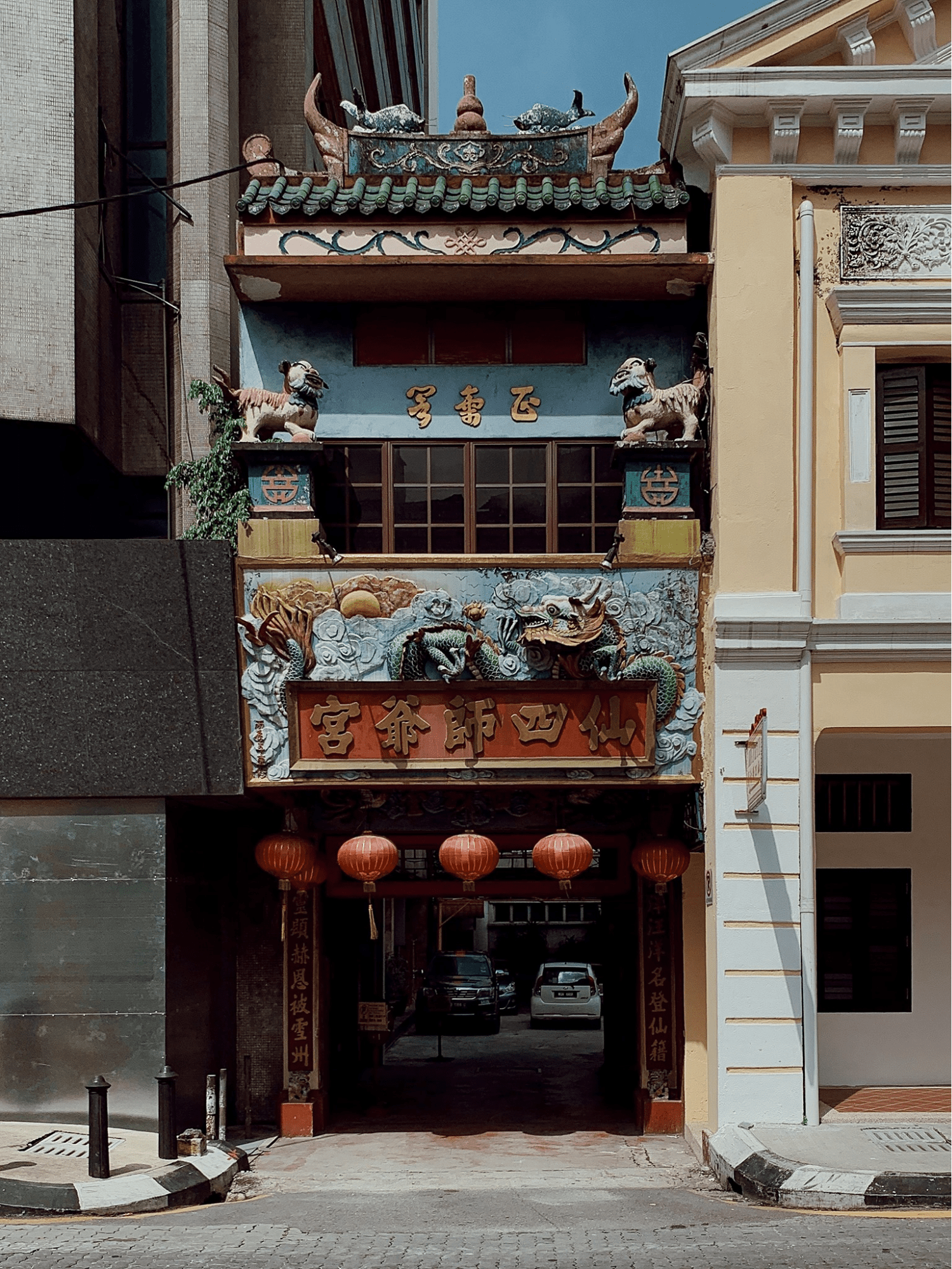
Image credit: 吉隆坡仙四师爷庙 Sin Sze Si Ya Temple Kuala Lumpur
Mention Chinese temples in KL and Thean Hou Temple might pop into mind, as it’s one of Southeast Asia’s largest temples. But another temple in KL that’s been around for more than 150 years is Sin Sze Si Ya Temple, considered the oldest Taoist temple in the city.
The temple was founded in 1864 by Kapitan Yap Ah Loy to honour patron deities Sze Si Ya and Sin Si Ya, who assisted him during the Selangor Civil War. Visitors of the temple, just a short 3-minute walk from Central Market, will get to spot shrines to the two here, as they’re believed to be based on real-life commanders. This includes two procession sedan chairs used to carry their statues, said to be over 100 years old each.
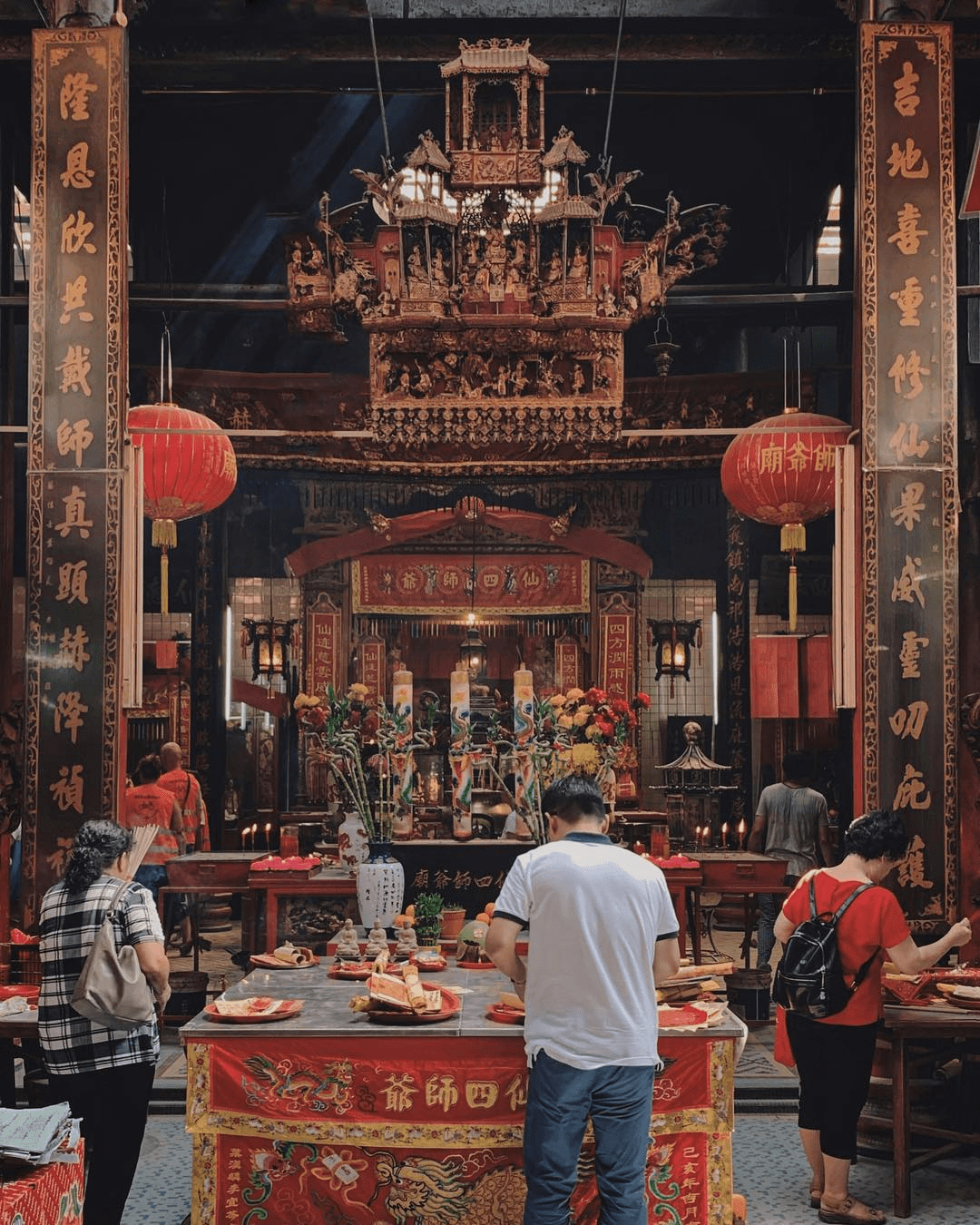
Image credit: @belindatay
Today, Sin Sze Si Ya Temple remains an important site for religious devotees as it once was to Chinese migrants during the 19th century. Flanked by two taller buildings on Jalan Tun HS Lee, its well-secluded location amidst the bustle of downtown KL is well frequented by many Chinese city dwellers during events such as Chinese New Year.
Address: 113A, Jalan Tun H S Lee, City Centre, 50050 Kuala Lumpur, WP Kuala Lumpur
9. Anglo-Oriental Building – was once a college
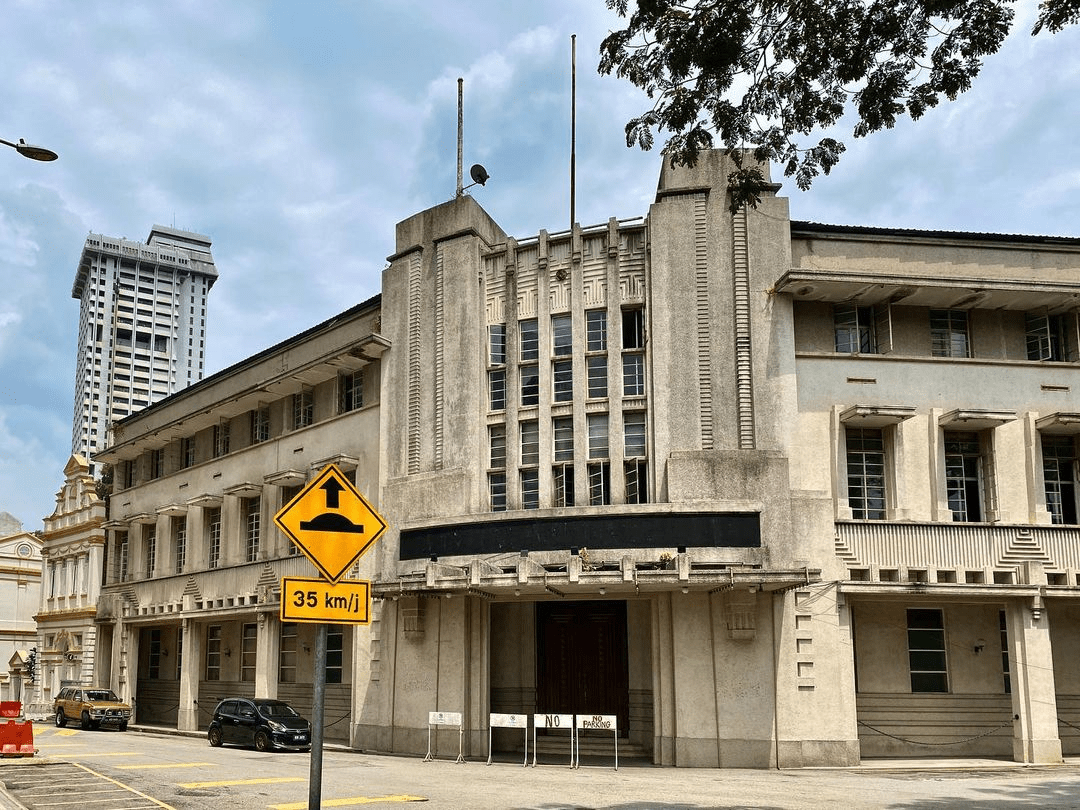
Image credit: @klcityscapes
Anglo-Oriental Building is often mistaken for Oriental Building for various reasons. Its eye-catching art deco exterior, for starters, bears similarities to the latter, as both buildings were designed by Arthur Oakley Coltman. It also sits on the corner of Jalan Tangsi and Jalan Parliamen, and has a curved facade much like the Oriental Building. The names are also similar.
But Anglo-Oriental Building, built in 1937 over 90 years ago, has its own history to tell.
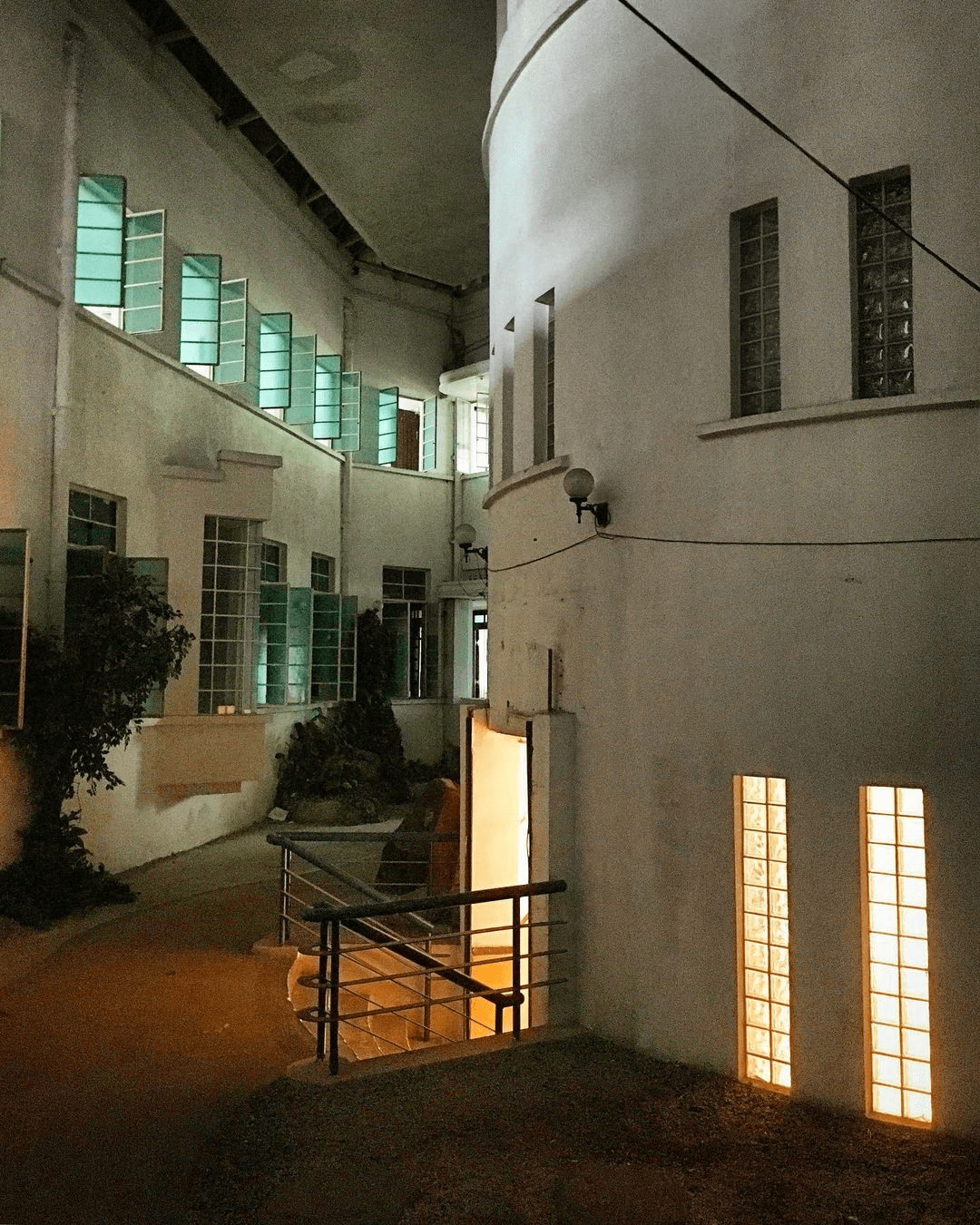
Image credit: @andypoonchewchuen
Anglo-Oriental Building was once hailed as a modern building in its time, with a “special motor car garage”, or parking lots, built into its ground floor. This was to accommodate office workers who would be able to easily park their cars, get to work and avoid street parking congestion – something modern-day city folks may be familiar with too.
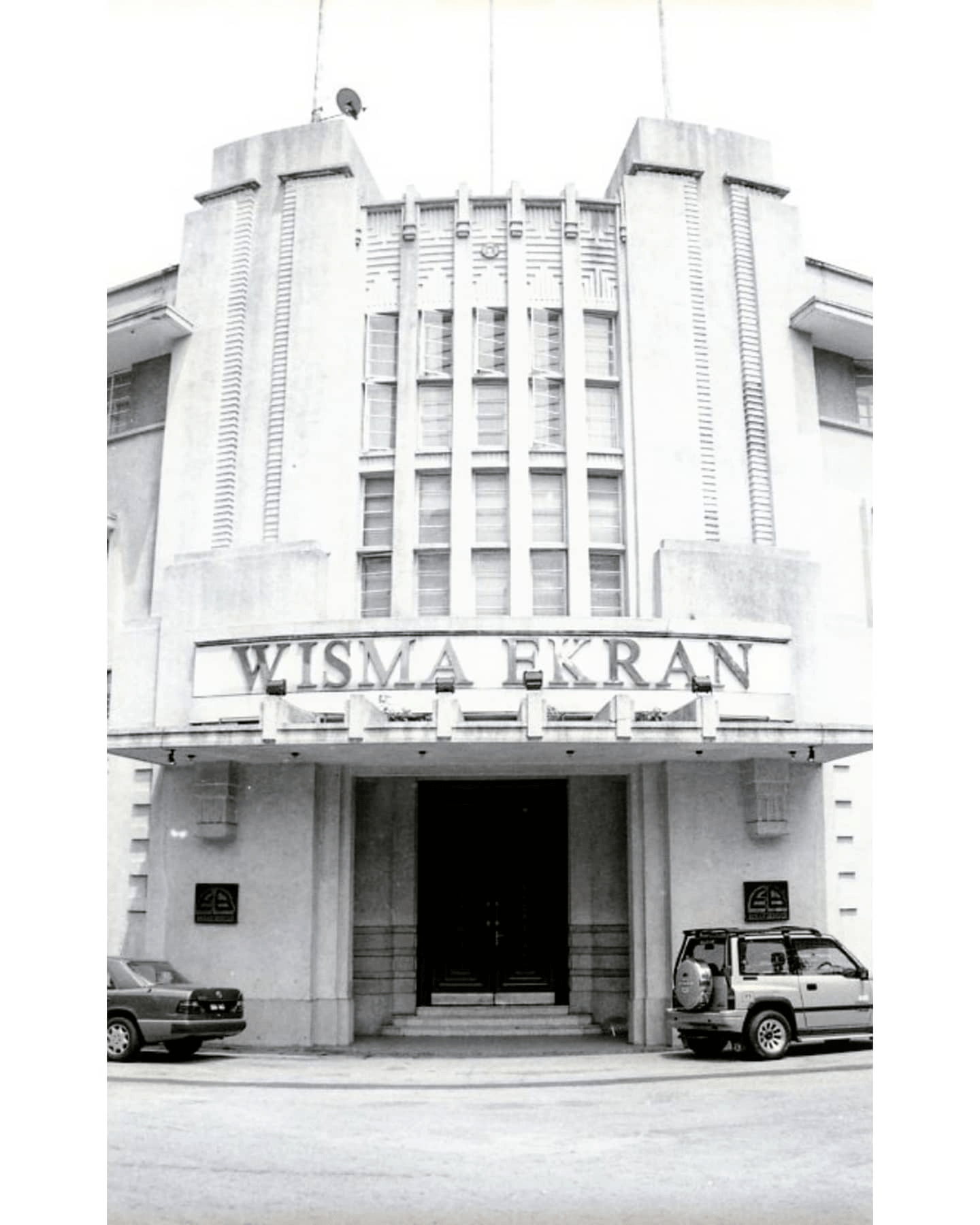
Image credit: Badan Warisan Malaysia
In its heyday, Anglo-Oriental Malaya Ltd, a subsidiary of Anglo-Oriental Mining Corporation, operated from here, which lends to the building’s name. Fast forward to 1941, and the building was briefly home to Mahkota College, when it underwent several renovations.
The building is now commonly known as Wisma Ekran, after Ekran Berhad acquired it. However, the investment holding company vacated the building in 2015, leaving Anglo-Oriental Building unoccupied since.
Address: Jalan Tangsi, Perdana Botanical Gardens, 50480 Kuala Lumpur
10. Bangunan Sulaiman – part of Federated Malay States Railway
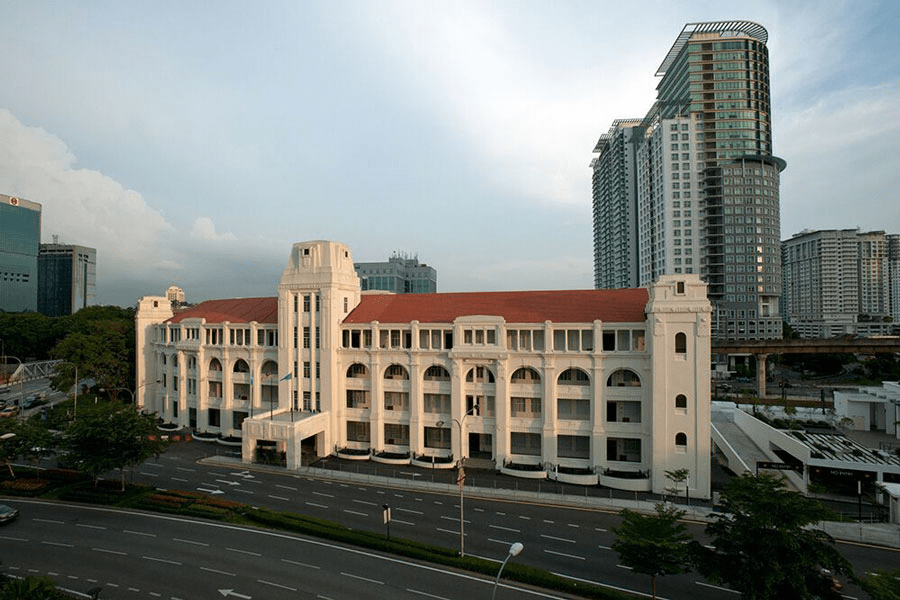
Image credit: Vescope.my
KL Railway Station and the Malayan Railway Administration Building are colonial buildings that make up KL’s collection of architectural marvels. A lesser-known heritage building, once part of the Federated Malay States Railway alongside these two icons, is Bangunan Sulaiman.
This building was built in 1926 and completed in 1930, around 40 years after KL Railway Station was opened to the public. Although it is located just across the road from the well-known station and railway office, Bangunan Sulaiman takes on familiar features of the art deco movement compared to the latter two’s blend of Western and Mughal architectural styles.
It lends its name from Sultan Sulaiman of Selangor, Sultan Sir Alaeddin Sulaiman Shah, the fifth Sultan of Selangor who reigned from 1898 to 1938.
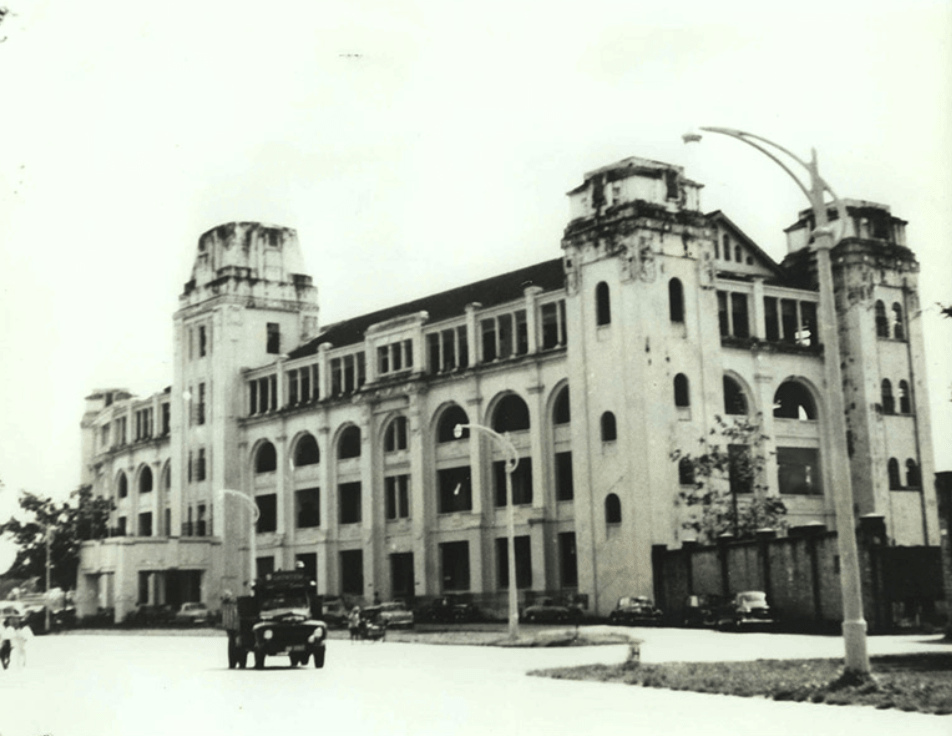
Bangunan Sulaiman photographed in 1956
Image credit: Astro Awani
The building has since been recognised as a National Heritage in 2018, and is now where Asian International Arbitration Centre (AIAC) is located.
Address: Jalan Sultan Hishamuddin, Kampung Attap, 50000 Kuala Lumpur, WP Kuala Lumpur
11. Vivekananda Ashrama – site for early Jaffna Tamil immigrants
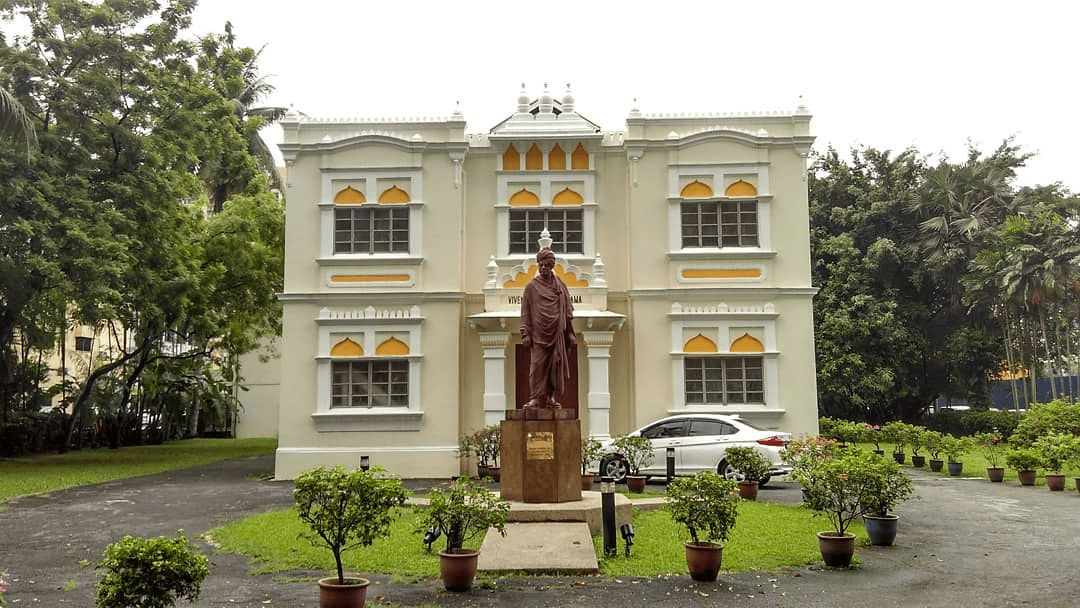
Image credit: @oom_tommy
Vivekananda Ashrama was built in 1904 by Jaffna Tamil immigrants, with a bronze statue erected in front of the building to honour Swami Vivekanada – an Indian Hindu monk who is considered a patriotic saint in India.
The ashram was an important site for Sri Lankan Jaffna in Brickfields, KL, as their first settlement was said to have relocated here. The building served as a reading room by the Tamil community in Brickfields in its early days, where followers of Vivekanada would congregate to study his works.
In 1914, it branched out into Vivekananda Tamil School Brickfields, which is just a 3-minute walk from the ashram, to educate children. Malaysia’s first prime minister, Tunku Abdul Rahman, officiated the school’s opening on 13th September 1958.
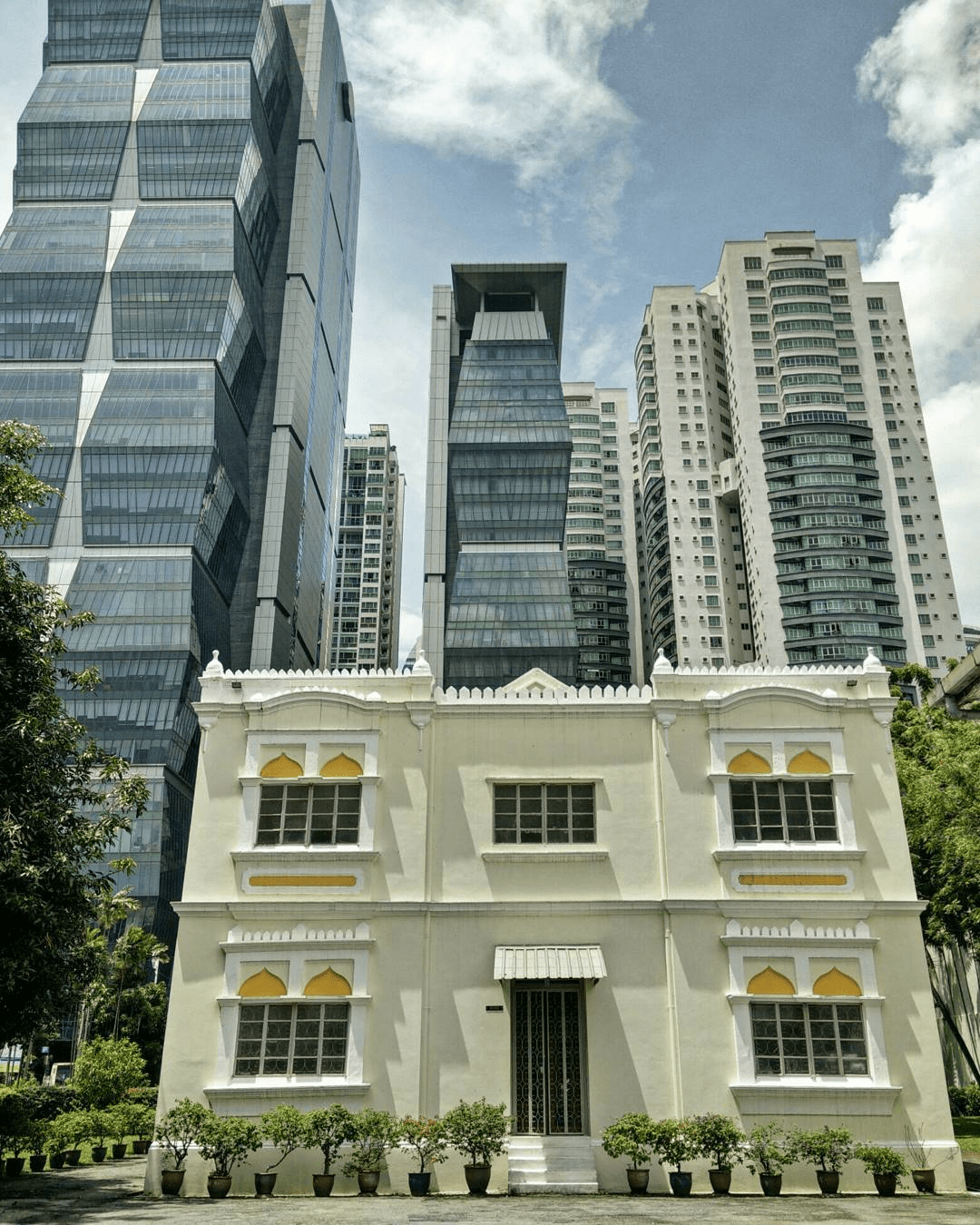
Image credit: @daniela_gostraightahead
Several public contributions and efforts have helped conserve the prominent building and statue in KL, as there were attempts by trustees to sell the land upon which it stands so it could be turned into a 23-storey luxury apartment in recent years.
The over 100-year-old building has since been gazetted as a National Heritage site in 2016.
Address: No. 220, Jalan Tun Sambanthan, Brickfields, 50470 Kuala Lumpur, WP Kuala Lumpur
Heritage buildings in KL and their histories
One of the charms of KL rests in its buildings that make up its familiar skyline, recognisable to anyone living in Malaysia. These heritage buildings with lesser-known histories in KL that are part of the city’s infrastructure all the same serves as a reminder of our country’s development and history.
Read more here:
- 6 places in Malaysia to visit to see architecture from different eras
- 8 lighthouses in Malaysia that serve up phenomenal views
- 10 unique mosques in Malaysia worth a visit for their architectural designs
Cover image adapted from: @christopherhwwong, @schutters.anita and Rumah Degil Sutan Puasa
